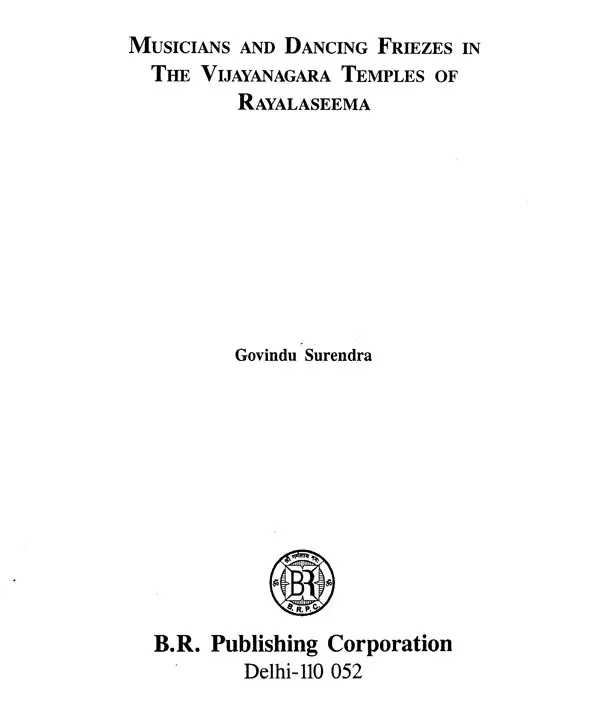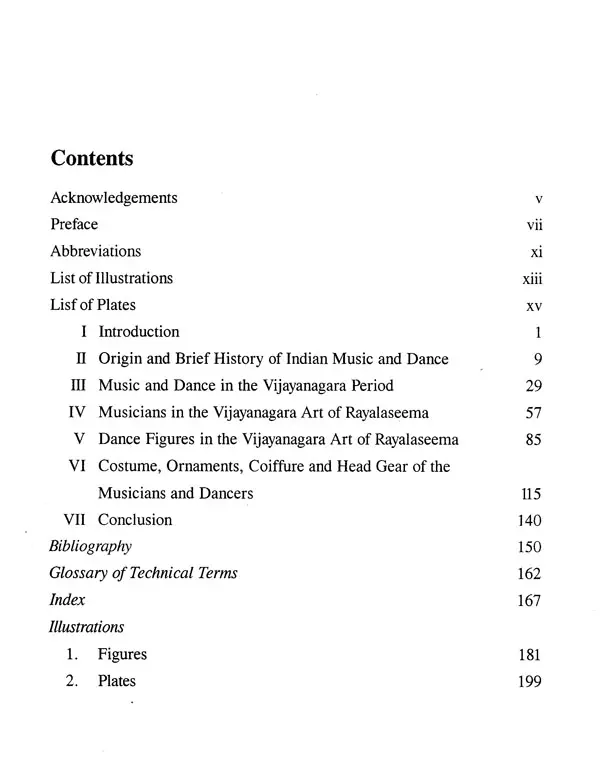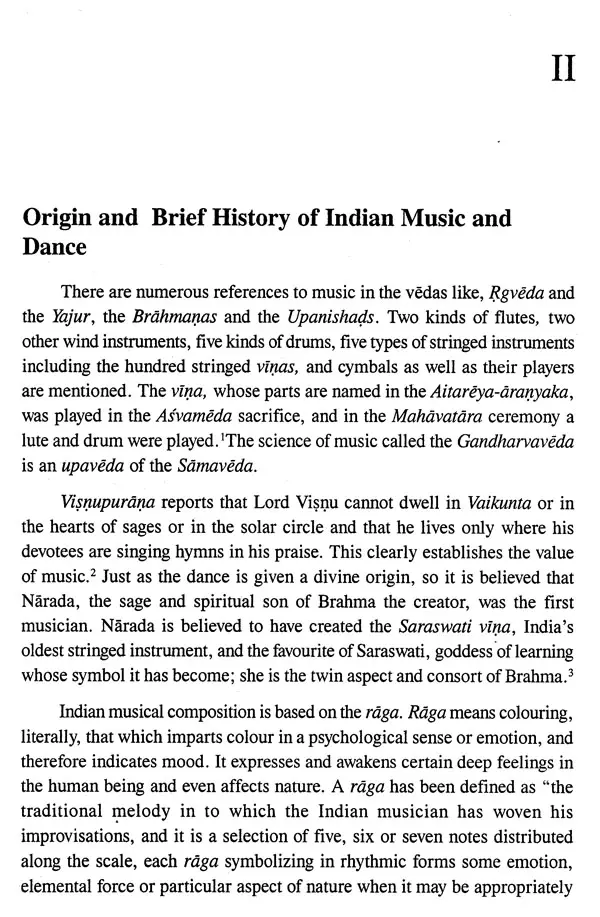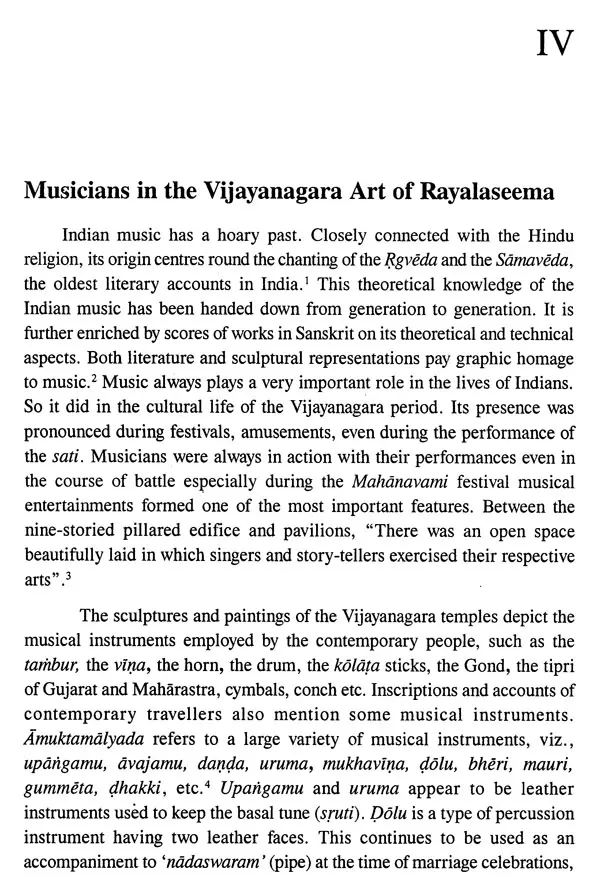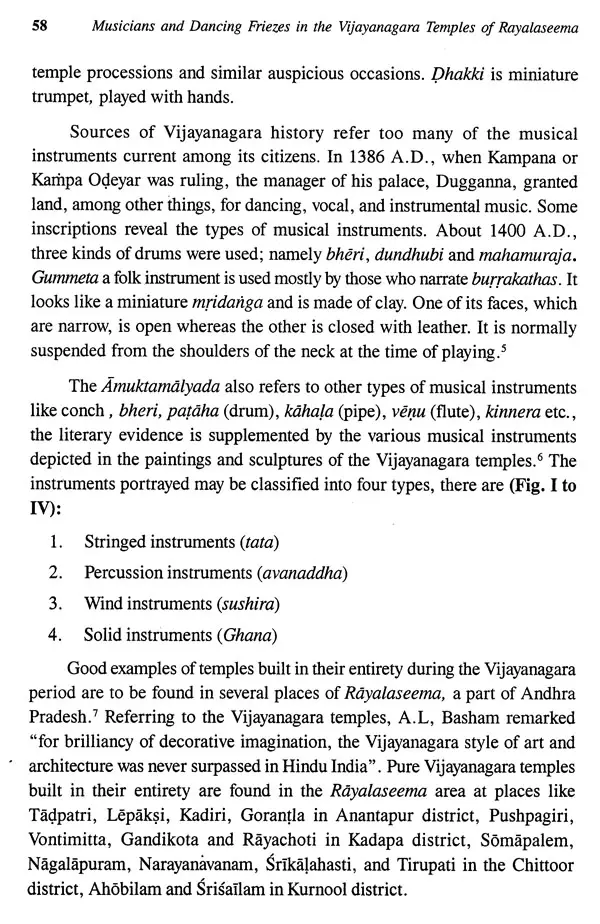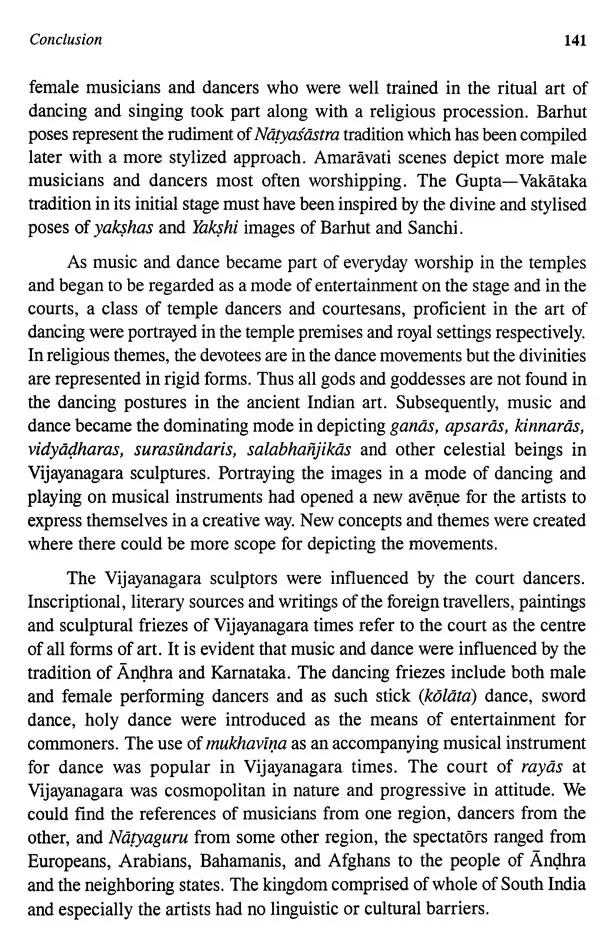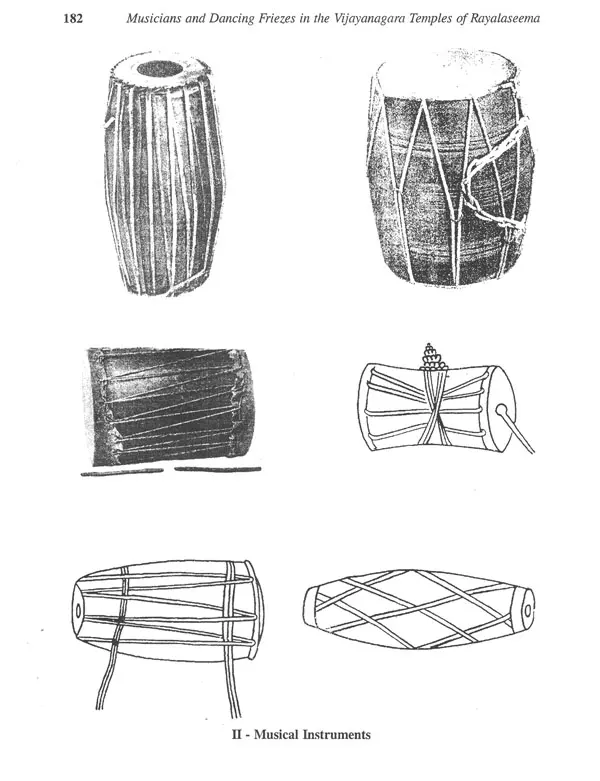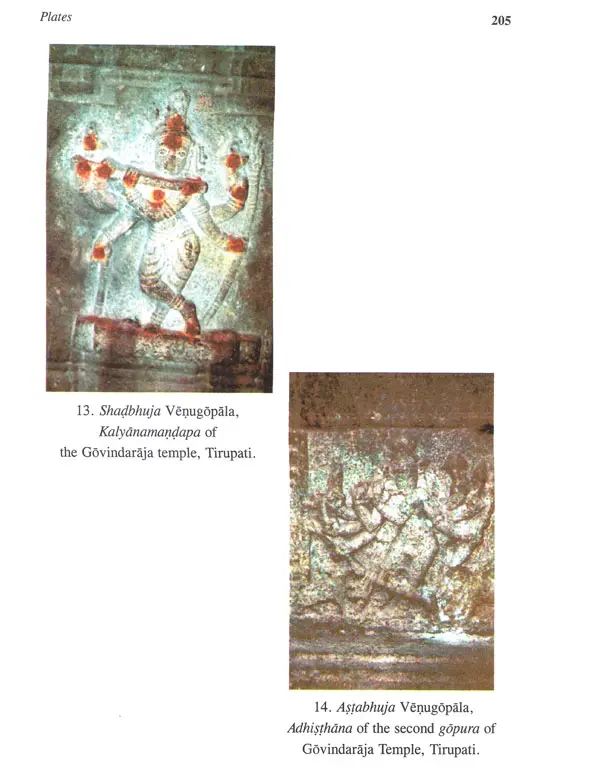
Musicians and Dancing Friezes in The Vijayanagara Temples of Rayalaseema
Book Specification
| Item Code: | UAQ008 |
| Author: | Rajendra Kumar Gupta |
| Publisher: | B.R. Publishing Corporation |
| Language: | English |
| Edition: | 2015 |
| ISBN: | 9789350502099 |
| Pages: | 234 (Color Illustrations) |
| Cover: | HARDCOVER |
| Other Details | 10.00 X 6.00 inch |
| Weight | 630 gm |
Book Description
Musicians and dancing friezes in the Vijayanagara temples of Rayalaseema" is a threshold to the concept of 'bhava', 'raga' and 'thala'the basis of Bharateeya music and dance. The book provides a study of the musicians and dancing friezes in the Vijayanagara temples of Rayalaseema to explore the basis of Indian music and dance: the concepts of bhava, raga and thala. It is concerned with the origin and development of music and dance under the patronage of the Vijayanagar rulers that is reflected in their temple art. It takes up social life of the artistes, their dress and ornaments, and the musical instruments they used as depicted in the temple sculptures that emphasise the artistes’ significant role in social and cultural life of the time and in the royal palaces of the kings. Based on fieldwork, the book includes illustrations that include photographs as well as line drawings of musical instruments, deities, ornaments and costumes. The important musicians and dance sculptures study based on extensive field work through illustrations all have made the book the first of its kind.
Dr. Govindu Surendra was born in 1978 at Nallacheruvu, Anantapur District of Andhra Pradesh, India. He completed his Elementary and High school education in his birth place and A.P.S.W.R. School, Kalasamudram respectively. He completed his Diploma in 2000 from S.V. Institute of Traditional Sculpture and Architecture, Tirumala Tirupati Devesthanams, Tirupati. He has also obtained P.G. Diploma in Museology, from the Osmania University, Hyderabad in 2012.
India is a land of rich culture and heritage. Since the beginning of our civilization, music and dance have been an integral aspect of our culture. Initially, these art forms were used as medium of propagation of religion and social reforms in which music and dance were incorporated to gain popularity. India also has a rich variety of musical instruments of different types. In the South India, temples, 'royal court' and other parts of the building provided an important stage for all musicians and dancers. Temples served not only as a centre of communication between man and god but also as a link between man and man. The celebrations and rituals performed in the temples provided enjoyment, part of the rituals being music and dance.
The Rayalaseema of Andhra Pradesh was at the acme of its glory during the rule of successive Rayas of Vijayanagara due this the area has named as "Rayalaseema". Present book to compare the music and dance during the Vijayanagara period, with the same arts that are reflected in the temple art of Rayalaseema. Dress, ornaments, costumes, musical instruments, the social life of the musicians and dancers which are delineated in the plastic art. It also states about the music and dance patronized during the Vijayanagara period. So far, only meager information is available on the dancing and musician figures represented in the Vijayanagara art. Proper attempt has not been made by any scholar on the work. Hence a humble attempt has chosen the Rayalaseema region for analyzing the musician and dancing sculptures of the Vijayanagara period. Some of the temples like those at Lepakshi, Tadipatri, Srisailam, Pushpagiri, and Srikalahasti are the veritable museums of the dance and music deserve in depth study.
It is reasonable to assume that man had communicated his thoughts through gesticulations, before he acquired the faculty of speech. From this it can be stated that so far as communication (of thoughts and feelings) was concerned, non-verbal communication (in terms of gesticulations) was prior to verbal communication through language. A poet communicates in poetry when he is inspired by sublime thought; a singer produces a song when he is enkindled by an emotion; and like wise an artist (i.e., an actor) vibrates his body when he is under the impact of ecstasy. When moved by joy or sorrow man hums a tune and it becomes music; when he steps his feet rhythmically, it becomes dance. Modern scholars believe that such tunes and steps were the origin of music and dance.
In the earliest stages of development, humans who were uncivilized lived in forests. Every thing in nature was a wonder for them. The primitive man, who imitated nature, started imitating the sounds and cries of different animals and birds in nature. It is important to note here that Saptasvaras. the basic notes of music, evolved from the cries of different animals and birds. The Indian musicians described that Peacocks call in Sadjama (Sa) Chataka birds as well as Bulls and Cows call low in Rishabha (Ri) Goats and Sheep bleat in Gandhara (Ga) Kroumcha birds sing and Lions roar in Madhyama (Ma), Frogs croak and Horse neigh in Daivata (Da), Elephants trumpet in Nishada (Ni).
In Sanskrit there is an old saying that "music is the tree of nature's symphonies and the dance is the blossom of all music". As Ananda Coomaraswamy aptly describes it, Indian music is essentially impersonal. It reflects an emotion or wisdom of any single individual. Its sorrow is with out tears, its joy without exaltation, and it is passionate without any loss of serenity. It is in the deepest sense of the words all-human.
**Contents and Sample Pages**
